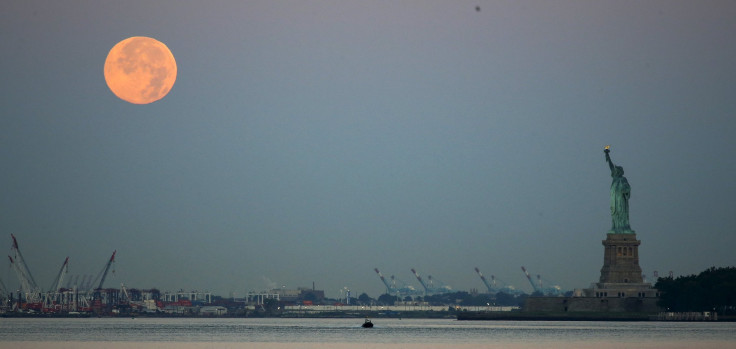What Is A Blue Moon? Everything You Need To Know About The Rare-ish Astronomical Event

Look: Up in the sky! It's a bird, it's a plane, it's ... a blue moon! That's right, Friday sees a totally normal, but kind of uncommon, astronomical event. There will be a second full moon in July and the event is known as a blue moon. Don't worry, there's no fear of the apocalypse or doom associated with the phenomenon.
A blue moon happens infrequently and the last one took place in 2012. The blue moon of 2015 is the full moon of July 31, following the full moon of July 2. The term has been around for a long time -- even people in Shakespeare's time knew what a blue moon was -- but it was not associated with the second full moon in a calendar month, according to NASA. A blue moon was defined as something rare or absurd. The Farmers' Almanac pinned down the first mention of the phrase to 1824. The attachment to a second full moon of the month took place in 1946, with a Sky & Telescope article that defined the occurrence as the blue moon.
Unlike a blood moon, which recently had doomsday prophecies attached to it, the blue moon could be good for you, astrologically speaking. If you're a believer in the stars, take a few chances and have some fun. July's full moon has been traditionally called a full buck moon, due to the antlers emerging on young bucks at this time of year, the Farmers' Almanac says.
This week's full moon technically took place Friday morning, but the moon will look plenty complete when you look up in the night sky. A blue moon takes place around every three years, but that can vary. There were two blue moons in three months in 1999. Interestingly, there is no name for the second new moon of the month.
If you want a true blue moon, you'll need a volcano. The ash and other particles from the eruption will scatter red light while blue light will pass, according to NASA. A total lunar eclipse is called a blood moon because the sun's light is projected onto the moon and Earth's atmosphere scatters blue light, letting the red light pass through to create a red hue.
Yup. Werewolves and other Luna-tics just love months with double Full Moons.
— Neil deGrasse Tyson (@neiltyson) July 29, 2015If you want a blue moon to be really special, let's hope it hangs low in the atmosphere. If that's the case, it'll create a moon illusion, where it'll be bigger and appear red, according to NASA. If you want to see the blue moon, look up in the night sky. Hopefully there are clear skies. If you can't see the full moon, check social media. The next blue moon takes place in January 2018 -- and that year will be a double blue moon year.
© Copyright IBTimes 2024. All rights reserved.











